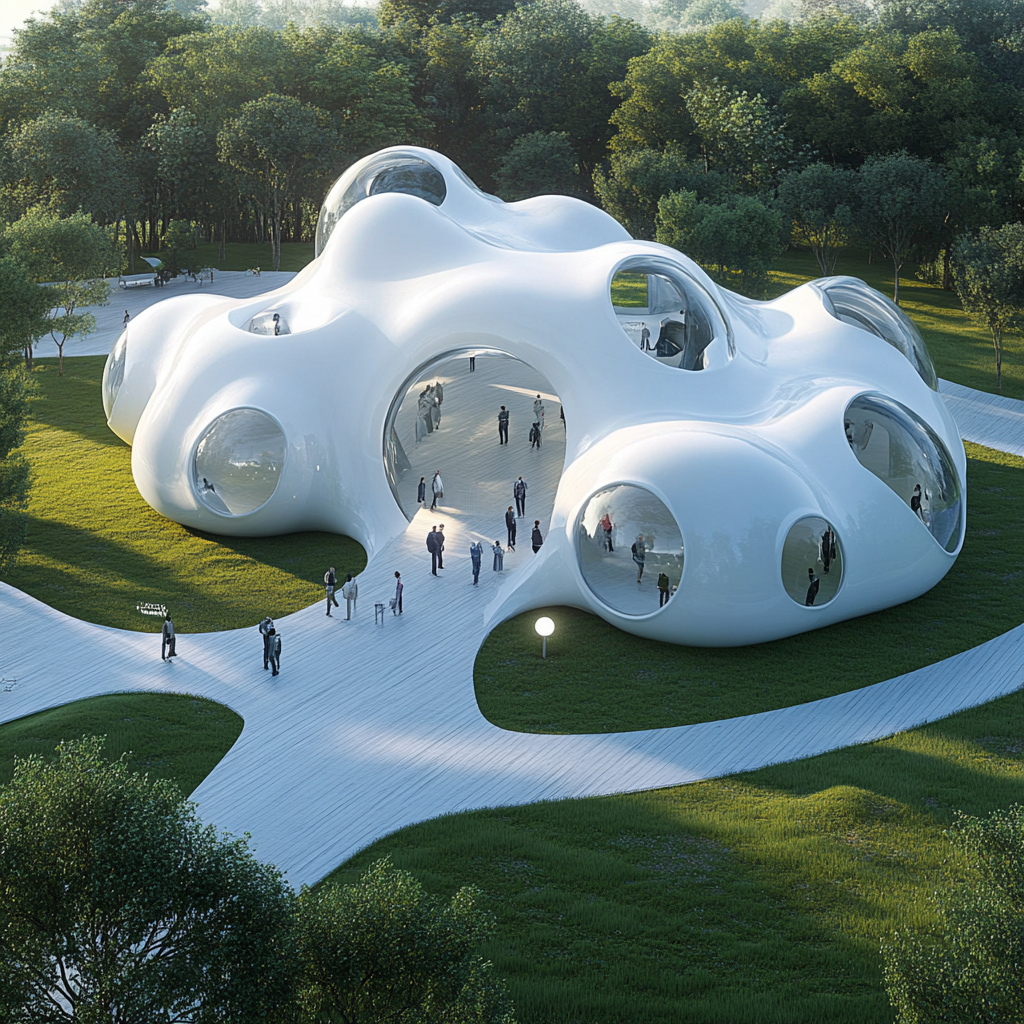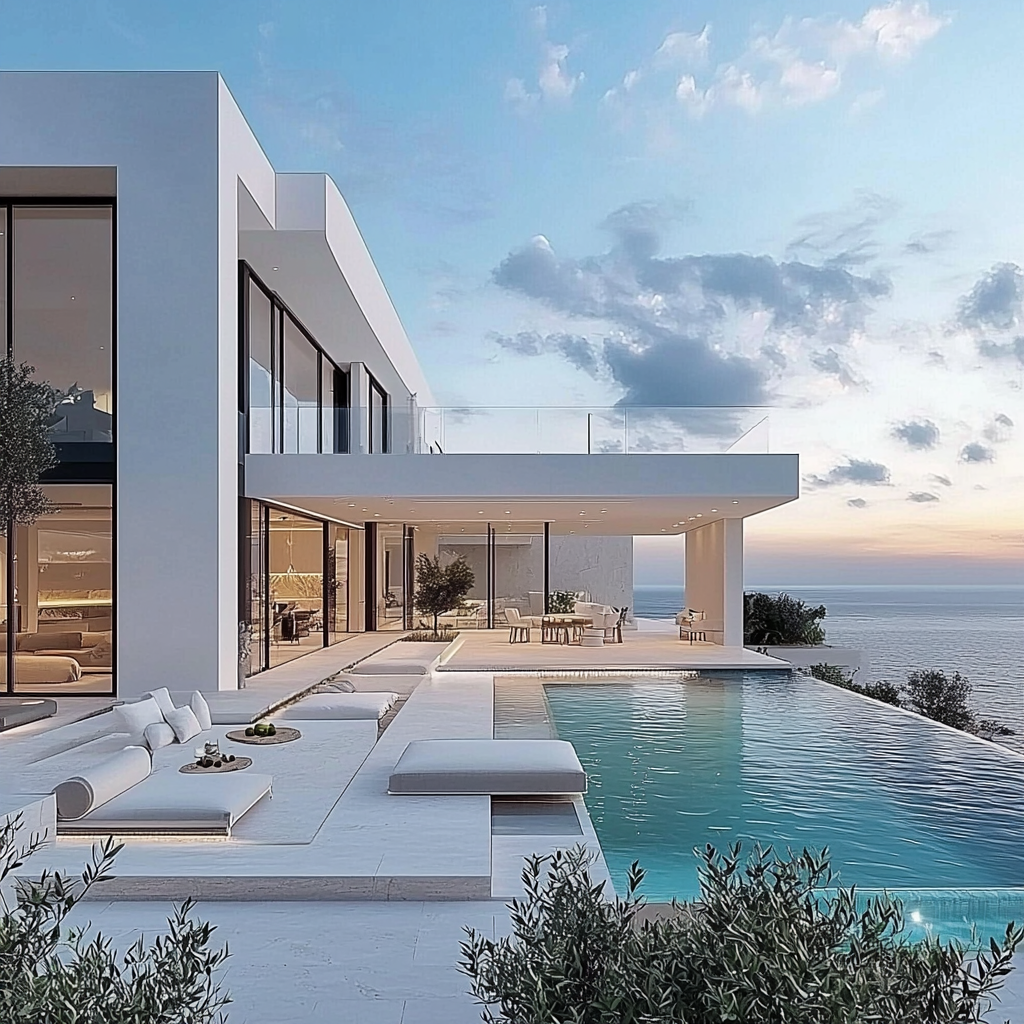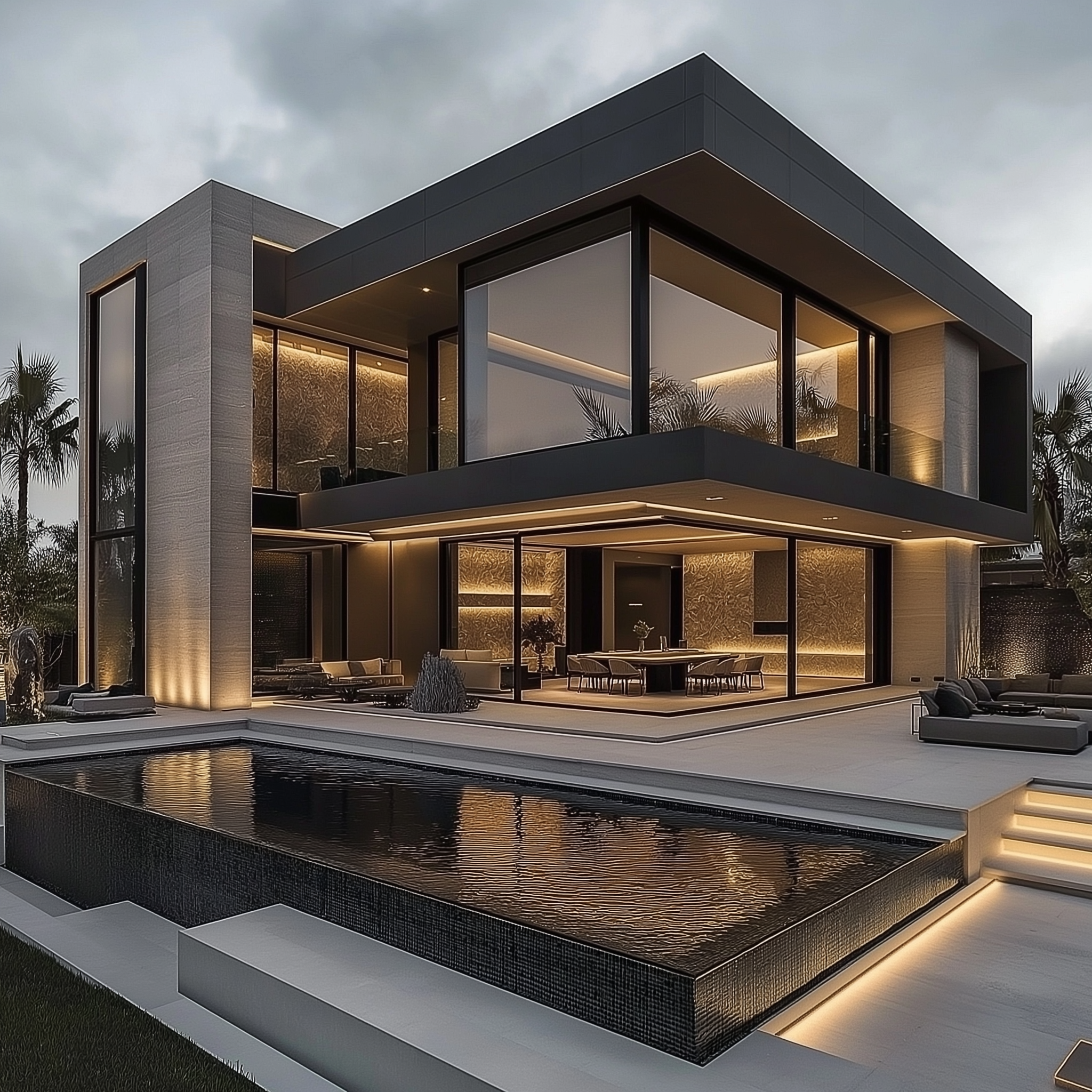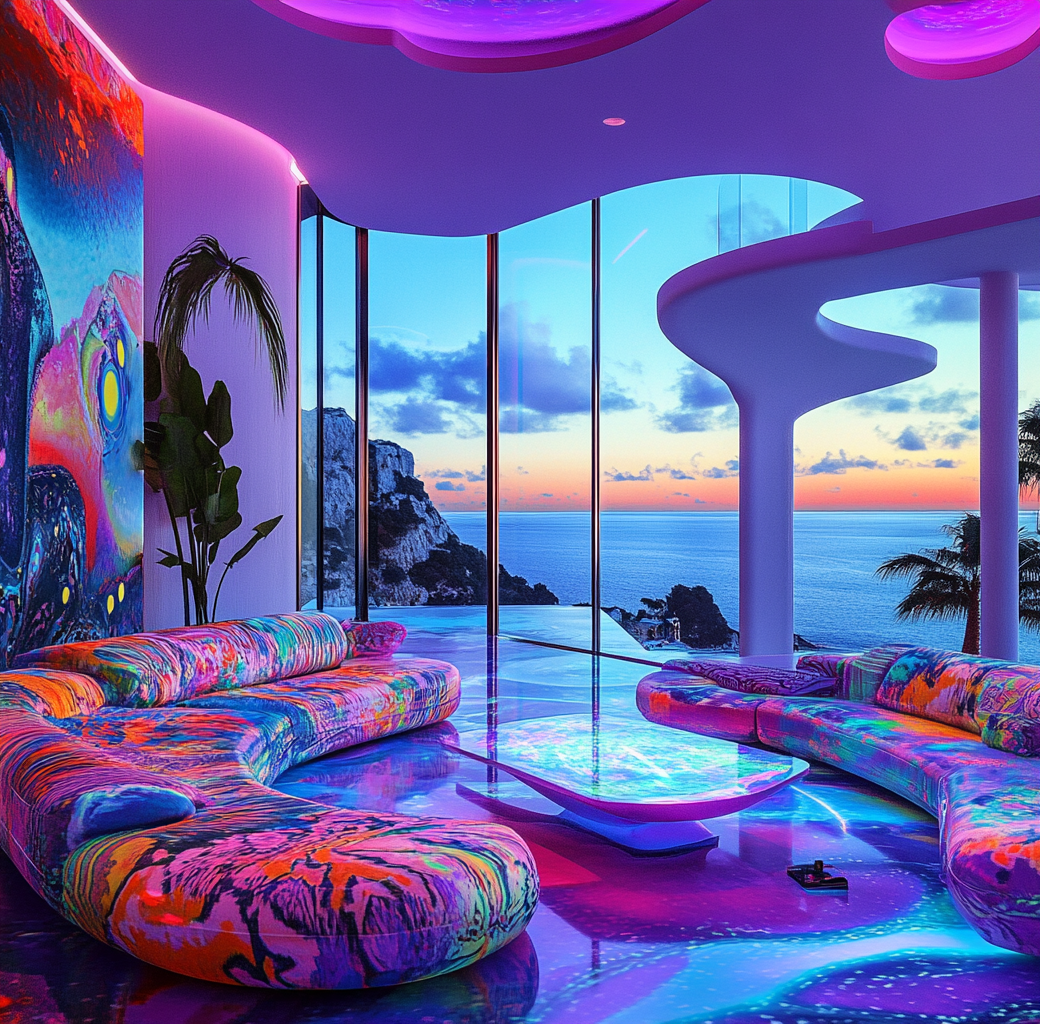Revolutionary Architectural Conception Through AI
This breathtaking architectural visualization represents the absolute cutting edge of AI-generated design possibilities. The image masterfully captures a revolutionary architectural complex that transcends conventional building forms, embracing a fluid, organic aesthetic that appears to defy traditional construction limitations. What's most extraordinary is how the artificial intelligence has envisioned spaces that feel simultaneously alien yet intuitive, pushing beyond conventional architectural paradigms while maintaining a sense of human scale and functional logic. The AI has brilliantly rendered the complex interplay of curved, pod-like structures that seem to float above a central public plaza, connected by sinuous walkways that flow organically between spaces.
The visualization demonstrates exceptional attention to material understanding, with translucent and reflective surfaces that suggest advanced building technologies beyond current widespread implementation. Notice how the AI has calculated complex light interactions throughout the space—ambient illumination filters through the translucent curved facades while targeted architectural lighting defines circulation paths and gathering areas. The subtle incorporation of human figures provides crucial scale reference while demonstrating how these revolutionary spaces might be navigated and experienced by users.
Efficiency Reimagined Through Computational Design
The efficiency achievement this visualization represents cannot be overstated. Traditional approaches to designing and visualizing architectural concepts of this complexity would require an extraordinary investment of time and specialized expertise. A conventional process would involve conceptual sketching, physical model-making, complex computational modeling, parametric optimization, material studies, lighting simulation, and photorealistic rendering—typically consuming thousands of person-hours across multidisciplinary teams and potentially costing hundreds of thousands of dollars. The AI system generated this complete visualization in seconds, representing an efficiency improvement of approximately 100,000x compared to conventional methods.
This quantum leap in productivity fundamentally transforms architectural exploration. Design teams can now investigate formally complex architectures that would previously have been abandoned as too resource-intensive to develop and communicate. The economic implications are revolutionary—reducing the visualization costs of highly complex forms from prohibitive to nominal while simultaneously compressing design development timelines from years to moments. This democratizes access to advanced form exploration, allowing practitioners of all scales to investigate revolutionary architectural approaches previously accessible only to elite institutions and practices with extraordinary resources.
Creative Liberation Through Computational Intelligence
The AI demonstrates remarkable creative intelligence in its architectural expression. The system hasn't merely replicated existing architectural vocabularies but has synthesized influences from advanced parametric design, biomorphic structures, and transportation infrastructure into a cohesive architectural language. The flowing forms create a hierarchy of spaces that intuitively guides understanding of public versus private zones. The semi-enclosed pods suggest specialized program areas while the open central plaza creates a natural gathering heart for the complex.
What's particularly impressive is the AI's understanding of systems integration. The visualization shows not just static architectural elements but hints at how transportation, circulation, and program would function cohesively. The curved pods appear to serve as both architectural enclosure and infrastructure, with vehicles that match the design language seamlessly integrated. These transportation elements aren't merely decorative but suggest a thoughtful consideration of how users would arrive at and navigate through this revolutionary environment.
Transformative Applications Beyond Visualization
This technology extends far beyond creating visually striking images. For architects, it enables exploration of forms previously considered unbuildable or prohibitively complex to design. Urban planners can visualize revolutionary public spaces that integrate multiple infrastructure systems. Transportation designers can see their vehicles contextualized within compatible architectural environments. Educational institutions can use these visualizations to help students understand possibilities beyond conventional construction limitations.
The technology's accessibility transforms the relationship between imagination and representation. Complex formal ideas that previously might have remained conceptual due to visualization challenges can now be communicated with photorealistic clarity. This accelerates architectural evolution by allowing the most revolutionary concepts to be shared, understood, and potentially developed rather than remaining confined by representation limitations.
Future Horizons in Computational Architecture
As AI architectural visualization continues to evolve, we can anticipate systems that not only generate stunning visualizations but provide analytical feedback on structural feasibility, material options, and construction approaches for these revolutionary forms. Future iterations may incorporate simulation capabilities, showing how such spaces would function under different usage scenarios, environmental conditions, and occupancy patterns.
The fluid, organic aesthetic shown in this image—with its emphasis on curved surfaces, spatial continuity, and systemic integration—represents just one direction AI can explore. The same technology can generate infinite architectural expressions, from hyperrational tectonics to fantastical structures that reimagine our relationship with the built environment, all with the same efficiency and sophistication demonstrated here.
This visualization heralds a new era where architectural imagination is empowered rather than constrained by representation tools—a future where the most revolutionary design concepts can be communicated with clarity regardless of their formal complexity or departure from architectural conventions.


 Join now
Join now




 Search
Search
Comments (0)
Leave a reply